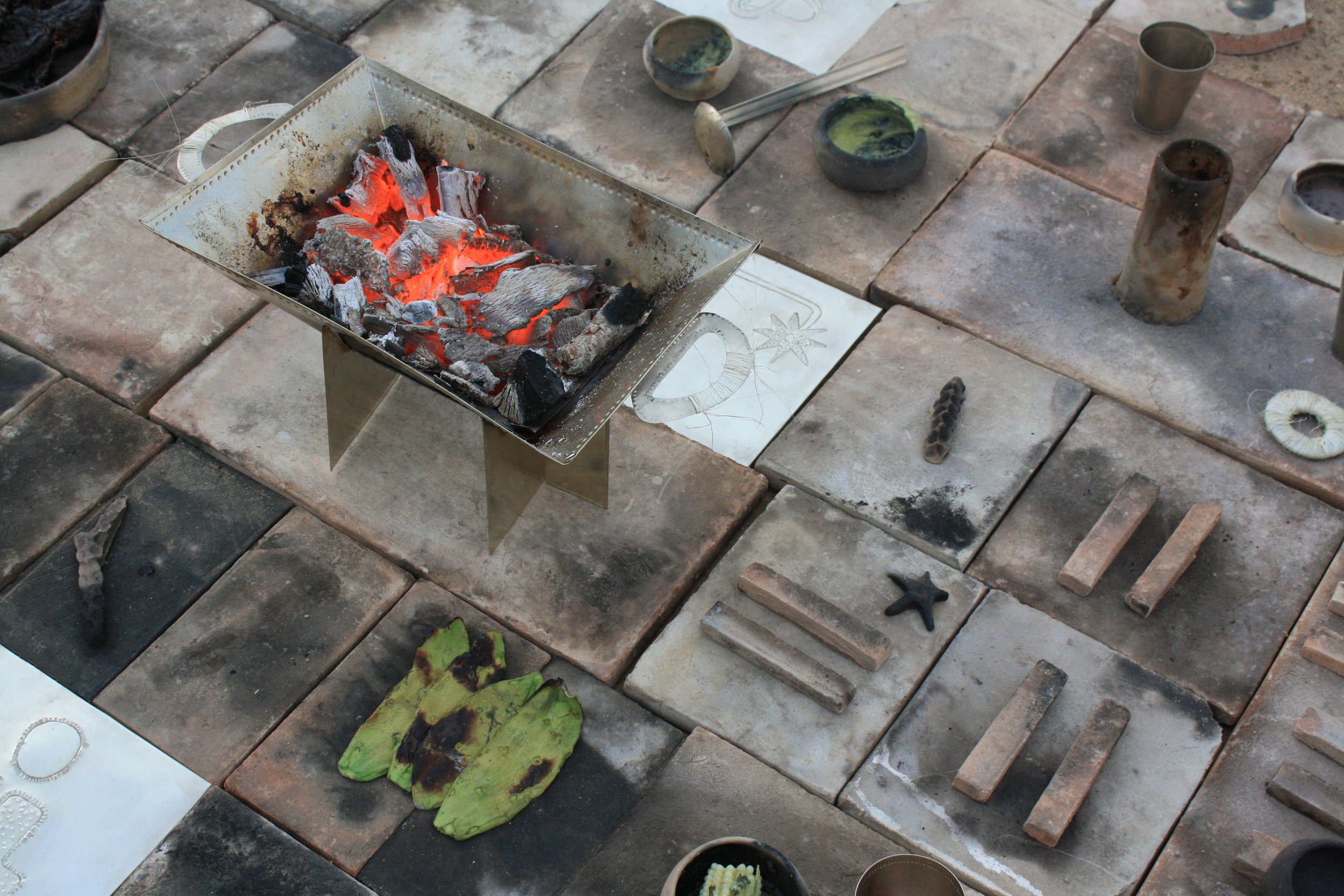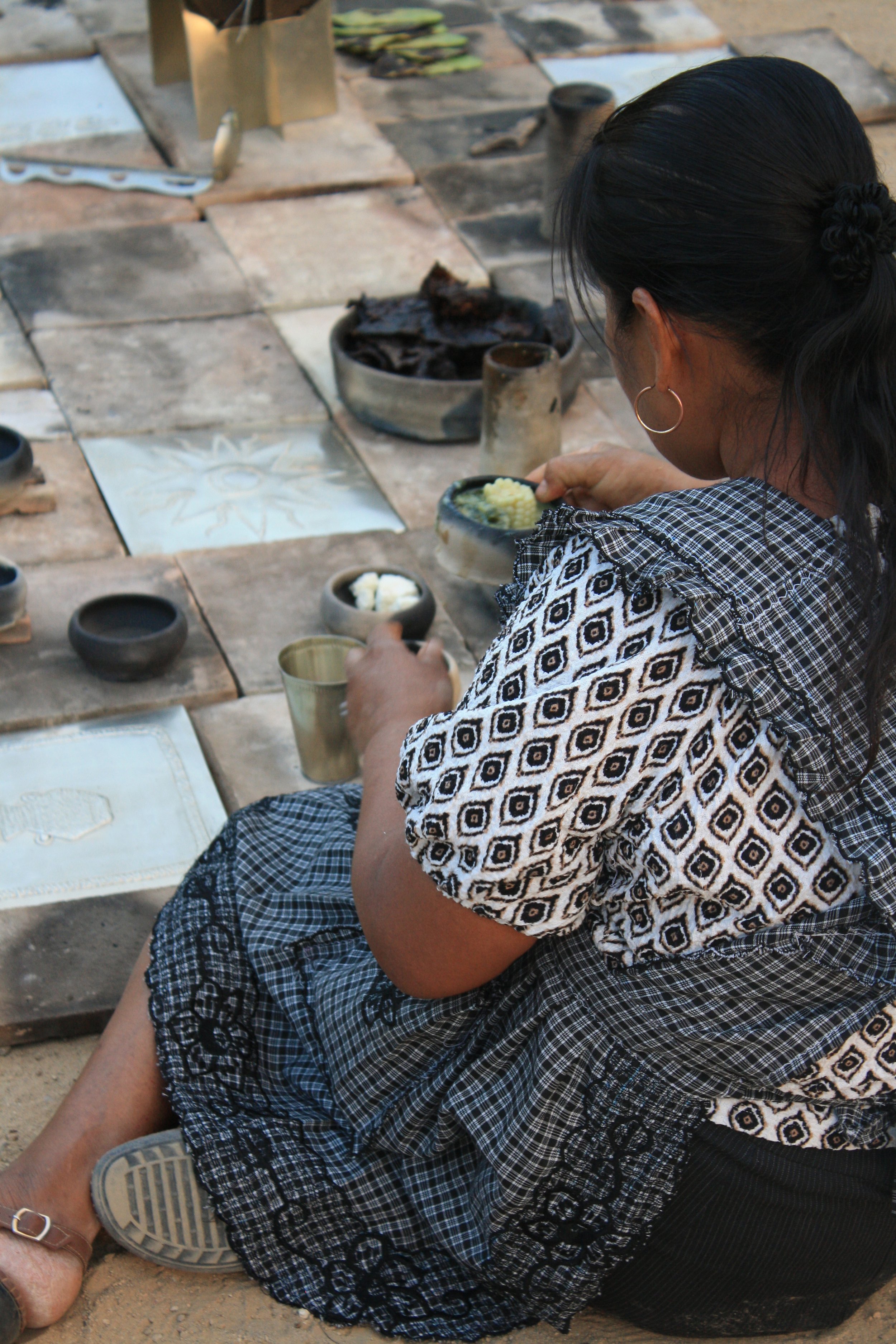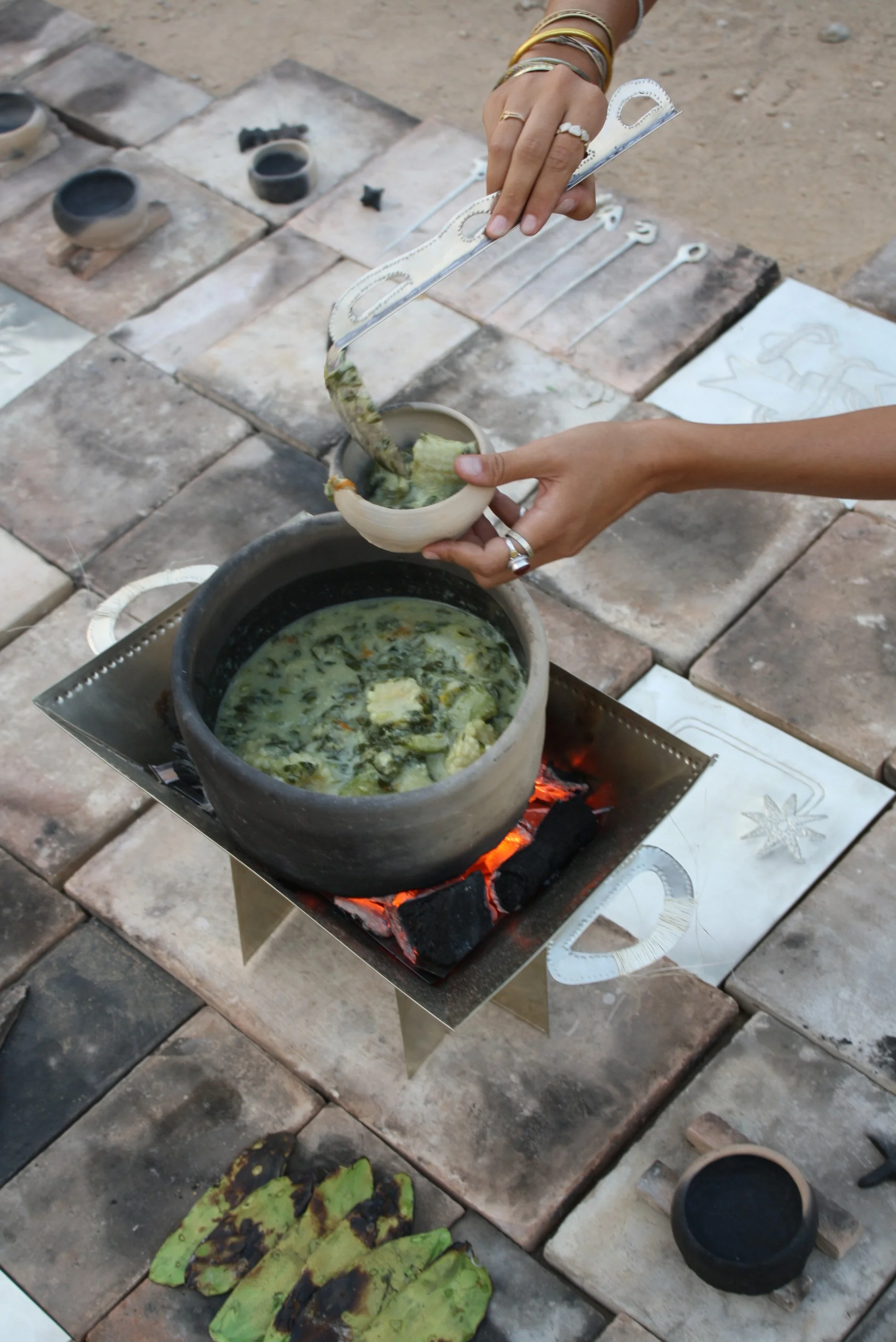
Tierra Quemada
The city of Oaxaca de Juárez, was founded in 1529. The historic city center, a UNESCO world heritage site, is an example of sixteenth century colonial planning with a perfectly orthogonal plan. A grid composed of 72 squares outlines the historic center, slightly offset from the cardinal points so that Santo Domingo, in the heart of the city, receives the last rays of sunlight each afternoon.
In Oaxaca, the daily task of cooking, rather than being treated as mundane, is cherished as a ritual and a microcosm of the seasonal shifts and natural forces that dictate living a life in tune with the land. Tierra Quemada is a portable, ephemeral, kitchen installation that incorporates clay, fire, metal, and agave fiber. The installation takes its inspiration from the four elements and reflects the Oaxacan landscape as a platform to cook and share a meal.
The modular tiles of burnt earth can be assembled into a single piece, representing the contours of the map of the city of Oaxaca. Objects designed using metal pay tribute to the ruggedness of the landscape; the candlestick is a beacon of light to draw the viewer in; and the anafre, as the centerpiece, invites the participants to gather around the fire and create a shared experience. The kitchen utensils and tableware welcome traditional food preparations. It represents a shared table, an offering of sustenance, and the ritual of coming together.
Created in collaboration with: Mimo Studio, Studio Payet, Rosa Lamonte, Ricardo Santiago Pacheco, Colores Del Suelo.
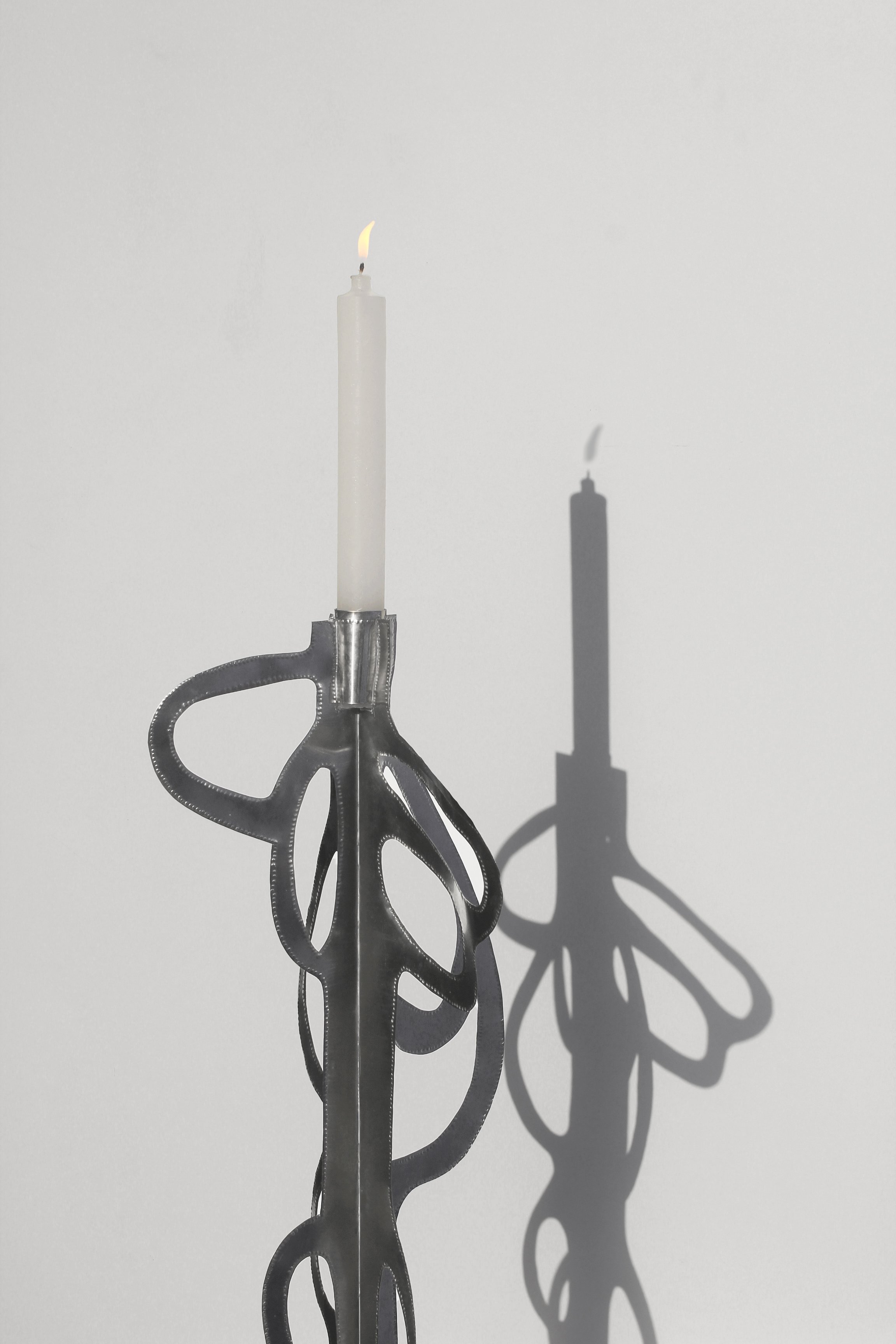

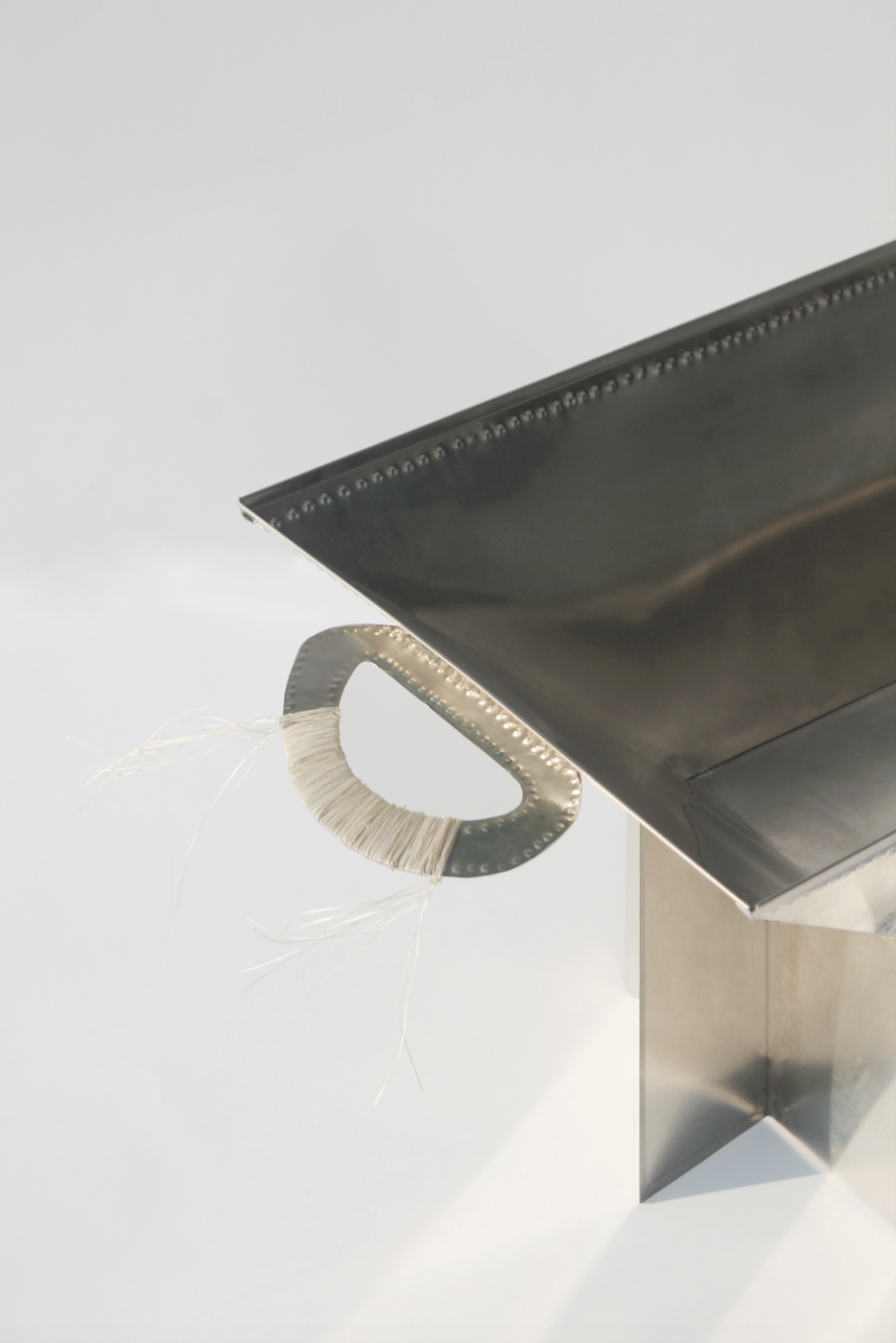


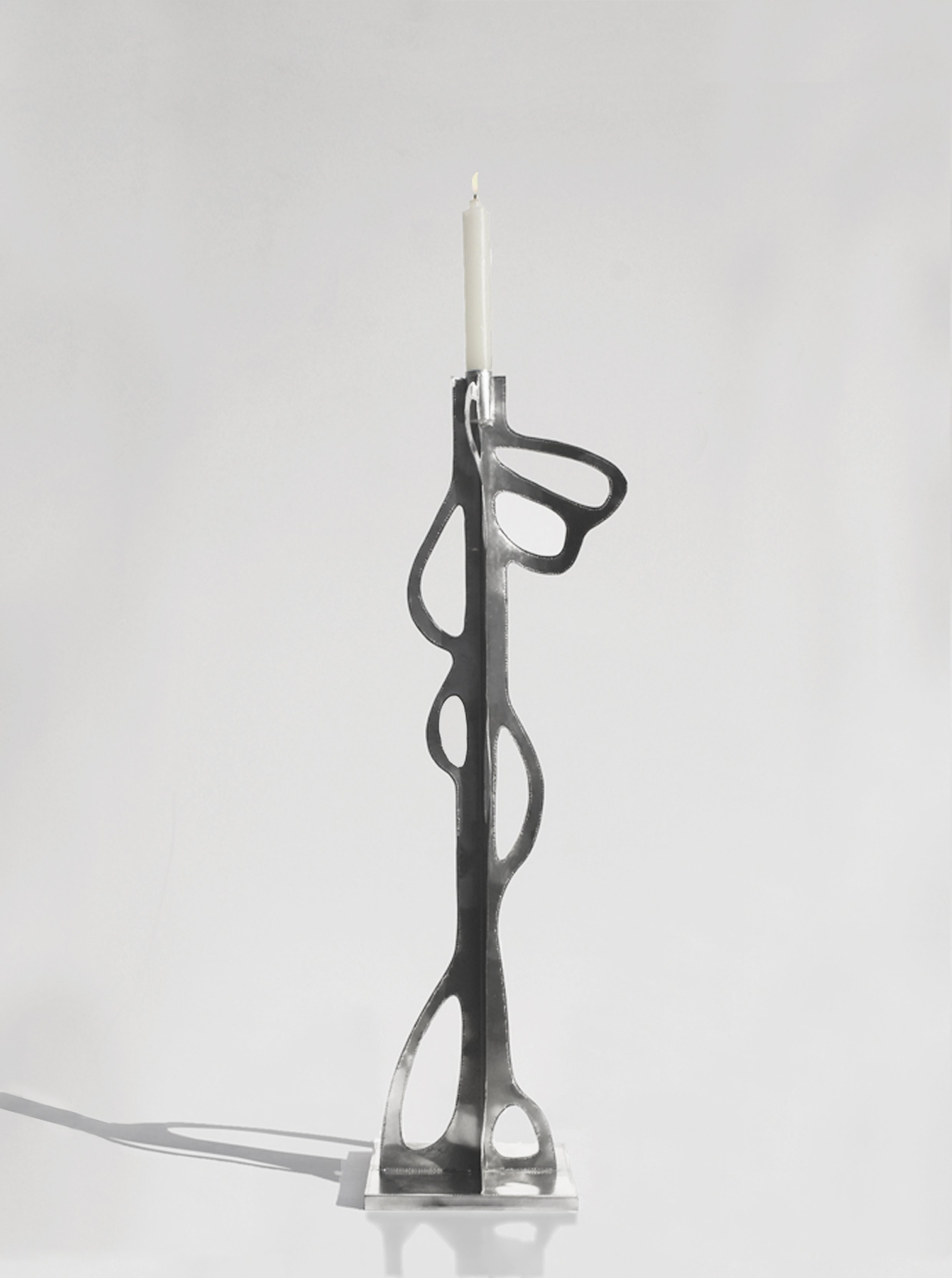
The installation and performance took place in the Oaxacan countryside where participants from France, the U.S. and Oaxaca cooked and shared a meal. Vera created a short film shot on Super 8 which was screened alongside the installation and objects at Gallery Quetzalli in Oaxaca City.
The performance, film, and exhibition.
